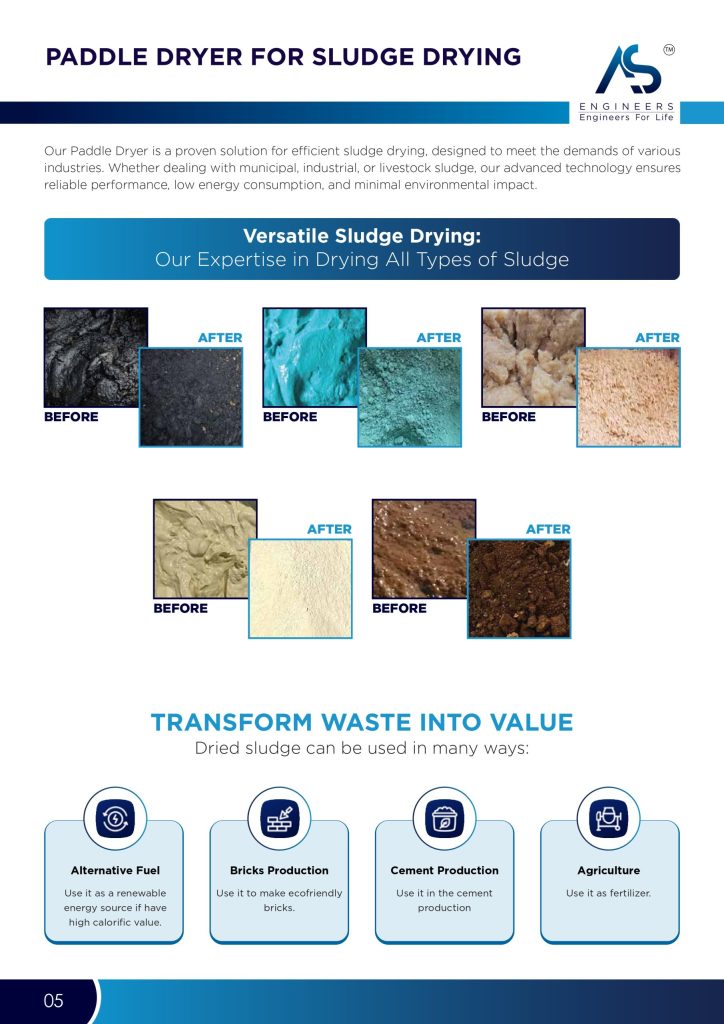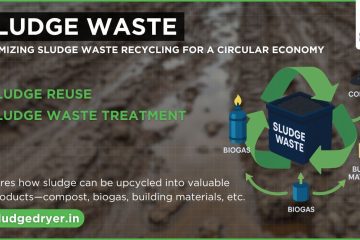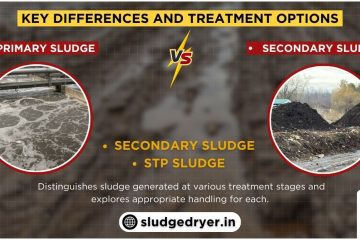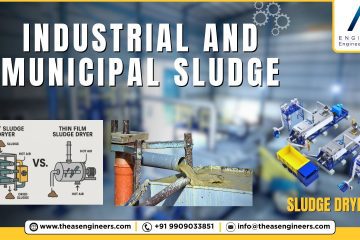Industrial facilities generate over 7 million tons of sewage sludge annually in the United States alone, with disposal costs reaching $3.2 billion per year. Yet most operators struggle with inefficient dewatering processes that inflate operational expenses and create environmental compliance headaches. The right sludge dewatering techniques can reduce disposal costs by 60-80% while transforming waste management from a burden into a streamlined operation.
This comprehensive guide reveals proven sludge dewatering techniques that industrial engineers, plant operators, and environmental managers use to maximize efficiency, minimize costs, and ensure regulatory compliance. You’ll discover which methods work best for different sludge types, how to optimize performance, and practical implementation strategies that deliver measurable results.
Understanding Sludge Dewatering Fundamentals
Sludge dewatering removes water from sewage sludge to reduce volume, lower transportation costs, and prepare waste for final disposal or beneficial reuse. The process concentrates solids while extracting liquid, transforming liquid sludge into a semi-solid cake with significantly reduced moisture content.
The dewatering process serves three critical functions. First, it dramatically reduces sludge volume—typically by 70-90%—which directly translates to lower hauling and disposal costs. Second, it improves handling characteristics by converting liquid sludge into a more manageable solid form. Third, it enables compliance with disposal regulations that often require specific moisture content thresholds.
Effective sludge dewatering techniques depend on understanding the relationship between particle size, settling characteristics, and water content. Different sludge types respond differently to various dewatering methods, making proper technique selection crucial for optimal results.
Mechanical Sludge Dewatering Techniques
Centrifuge Dewatering Systems
Centrifugal dewatering represents the most widely adopted mechanical sludge dewatering technique in modern wastewater treatment facilities. These systems use high-speed rotation to separate solids from liquids through centrifugal force, achieving cake dryness levels of 18-25% solids content.
Solid Bowl Centrifuges operate at 3,000-4,000 RPM, generating forces 2,000-3,000 times greater than gravity. The rotating bowl creates a high-G environment where heavier solids settle against the bowl wall while lighter water moves toward the center. An internal screw conveyor continuously removes the separated solids.
Disc Stack Centrifuges utilize a series of conical discs to increase separation surface area within a compact footprint. These units excel at processing fine particles and achieving higher clarity in the separated liquid phase.
Key advantages include continuous operation, compact footprint, and minimal operator attention. However, centrifuges require higher energy consumption and regular maintenance of rotating components.
Belt Filter Press Technology
Belt filter presses combine gravity drainage with mechanical pressure to achieve effective sludge dewatering. The process involves three distinct stages: gravity drainage, low-pressure pressing, and high-pressure pressing.
During gravity drainage, conditioned sludge spreads across a porous belt where free water drains through the belt fabric. The partially dewatered sludge then passes between two tensioned belts through a series of decreasing-diameter rollers that apply progressive pressure.
This technique achieves 15-20% solids content in the final cake while maintaining gentle treatment that preserves cake structure. Belt filter presses handle varying feed rates effectively and produce consistent results across different sludge types.
Operational advantages include lower power consumption compared to centrifuges, easier maintenance access, and the ability to handle fibrous materials. The main considerations involve belt replacement costs and the need for adequate polymer conditioning.
Screw Press Dewatering
Screw press technology employs a slowly rotating screw within a cylindrical screen to compress sludge and force water through the screen openings. The screw’s decreasing pitch creates increasing pressure as sludge moves toward the discharge end.
The continuous process achieves 18-22% solids content while consuming minimal energy—typically 60-80% less than centrifuges. The gentle compression action works particularly well with biological sludges that benefit from gradual water removal.
Recent innovations include variable pitch screws and adjustable back-pressure systems that optimize performance for different sludge characteristics. These advances enable operators to fine-tune the dewatering process for maximum efficiency.

We understand the real-world challenges industries face with sludge management. That’s why we designed our paddle dryer to do more than just dry sludge—it transforms a messy, costly problem into a manageable, efficient process. Our paddle dryer uses indirect heating to gently remove moisture, reducing sludge volume, lowering disposal costs, and helping businesses meet environmental norms with ease. It’s a silent worker behind the scenes, making plants cleaner, safer, and more sustainable. Whether you run an ETP, STP, or industrial unit, our paddle dryer simplifies your sludge drying needs—reliably, efficiently, and with minimal human intervention.
Gravity-Based Sludge Dewatering Methods
Gravity Thickening
Gravity thickening serves as the foundation of many sludge dewatering techniques, using settling principles to concentrate solids before mechanical dewatering. Properly designed gravity thickeners can increase sludge concentration from 0.5-1% to 3-6% solids content.
Circular Thickeners feature a central feed well with slowly rotating rake arms that consolidate settled solids toward the center discharge. The clarified supernatant overflows at the periphery, creating a continuous concentration process.
Rectangular Thickeners utilize traveling bridge mechanisms with scraper blades to move settled solids toward collection hoppers. These units work well in facilities with space constraints or existing rectangular basins.
The thickening process reduces subsequent mechanical dewatering load by 60-80%, significantly improving overall system efficiency. Proper polymer addition during thickening enhances settling rates and produces more concentrated underflow.
Drying Beds
Sand drying beds represent the most traditional sludge dewatering technique, relying on drainage and evaporation to remove water from applied sludge layers. While labor-intensive, drying beds achieve excellent results in suitable climates.
Conventional Sand Beds consist of 8-12 inches of graded sand over a gravel drainage layer with underdrain piping. Sludge application depth typically ranges from 8-12 inches, with drying cycles lasting 2-6 weeks depending on weather conditions.
Paved Drying Beds substitute concrete or asphalt surfaces with drainage channels for the sand layer. These beds enable mechanical sludge removal and faster turnaround times between applications.
Wedge Wire Drying Beds incorporate stainless steel wedge wire screens over drainage channels, providing superior drainage characteristics and enabling year-round operation in many climates.
Climate considerations significantly impact drying bed performance. Facilities in arid regions achieve 25-35% solids content, while humid climates may require covered beds or alternative techniques.
Chemical Conditioning for Enhanced Dewatering
Polymer Selection and Application
Chemical conditioning with polymers dramatically improves sludge dewatering performance across all mechanical techniques. Proper polymer selection and dosing can increase cake solids content by 3-5% while reducing filtrate turbidity by 85-95%.
Cationic Polymers work best with negatively charged biological sludges, neutralizing surface charges and promoting particle aggregation. High molecular weight, medium charge density polymers typically provide optimal performance for municipal sludge applications.
Anionic Polymers excel with positively charged sludges, particularly those containing metal hydroxides or lime. These polymers bridge particles together while maintaining floc stability during mechanical dewatering.
Nonionic Polymers serve specialized applications where charge neutralization isn’t the primary mechanism. These polymers work through bridging and entanglement mechanisms, particularly effective with mixed sludge types.
Polymer dosing rates typically range from 2-8 pounds per dry ton of sludge, with optimization requiring jar testing and full-scale trials. Proper mixing intensity and contact time ensure complete polymer activation and sludge conditioning.
Inorganic Conditioning Agents
Inorganic conditioners modify sludge structure through chemical precipitation and pH adjustment. While less common than polymers, these agents provide cost-effective solutions for specific sludge types.
Lime Conditioning raises pH to 11-12, destroying bacterial cell walls and improving sludge drainage characteristics. The process requires 15-25% lime dosage by dry weight but produces a stabilized product suitable for land application.
Ferric Chloride acts as both a coagulant and conditioner, forming iron hydroxide precipitates that improve sludge structure. Typical dosages range from 5-15% by dry weight, with effectiveness depending on sludge alkalinity.
Aluminum Sulfate provides similar benefits to ferric chloride but requires careful pH control to avoid aluminum resolubilization. The process works best with sludges having moderate alkalinity levels.
Advanced Sludge Dewatering Technologies
Electrodewatering Systems
Electrodewatering applies direct current to mechanically dewatered sludge, using electrical forces to extract additional water. This emerging technology can increase cake solids from 20% to 30-35%, representing a significant advancement in dewatering efficiency.
The process involves placing electrodes in contact with filter cake, creating an electrical field that mobilizes water molecules toward the cathode. Electroosmotic flow overcomes the binding forces that retain water in mechanical dewatering systems.
Energy consumption ranges from 50-150 kWh per dry ton of sludge, but the additional water removal often justifies the cost through reduced disposal volumes. The technology works particularly well as a secondary treatment following conventional mechanical dewatering.
Thermal Drying Integration
Thermal drying systems combine mechanical dewatering with heat application to achieve 90-95% solids content. While energy-intensive, these systems enable beneficial reuse applications and eliminate disposal costs.
Indirect Dryers use heated surfaces to evaporate water without direct contact between sludge and combustion gases. Paddle dryers and disc dryers represent common configurations for sludge applications.
Direct Dryers inject hot gases directly into the sludge stream, providing rapid heat transfer and water evaporation. Flash dryers and rotary dryers utilize this approach for high-capacity applications.
Solar Drying harnesses solar energy to reduce operating costs while achieving significant water removal. Greenhouse-style solar dryers can process 20-30 tons of wet sludge per day in suitable climates.
Optimizing Sludge Dewatering Performance
Process Control and Monitoring
Effective sludge dewatering requires continuous monitoring and adjustment of key operating parameters. Modern control systems integrate multiple sensors and automated adjustments to maintain optimal performance.
Solids Content Monitoring using online analyzers enables real-time feedback for polymer dosing and equipment adjustment. Microwave-based analyzers provide accurate measurements without sample preparation requirements.
Filtrate Quality Monitoring indicates conditioning effectiveness and equipment performance. Turbidity, suspended solids, and phosphorus measurements help optimize chemical addition rates.
Torque and Power Monitoring on mechanical equipment provides early warning of performance degradation or maintenance needs. Trending these parameters helps predict optimal maintenance intervals.
Flow Rate Control ensures consistent loading rates that maximize dewatering efficiency. Variable frequency drives on feed pumps enable precise flow control and energy optimization.
Troubleshooting Common Issues
Sludge dewatering problems typically manifest as poor cake quality, high filtrate turbidity, or excessive chemical consumption. Systematic troubleshooting approaches help identify root causes and implement effective solutions.
Poor Cake Dryness often results from inadequate conditioning, excessive feed rates, or worn equipment components. Solutions include polymer optimization, feed rate reduction, or equipment maintenance.
High Filtrate Turbidity indicates incomplete flocculation or mechanical equipment problems. Polymer type changes, mixing improvements, or equipment adjustments typically resolve these issues.
Excessive Chemical Consumption may result from sludge composition changes, inadequate mixing, or equipment inefficiencies. Regular sludge characterization and polymer optimization help control costs.
Equipment Vibration in centrifuges signals imbalanced loading or mechanical wear. Proper maintenance schedules and load monitoring prevent catastrophic failures.
Cost Analysis and Economic Considerations
Operating Cost Comparisons
Different sludge dewatering techniques involve varying capital and operating costs that significantly impact overall project economics. Understanding these cost structures helps select the most economical solution for specific applications.
Centrifuge Systems typically require $300,000-$800,000 capital investment for municipal-scale applications, with operating costs of $15-25 per dry ton including energy, chemicals, and maintenance.
Belt Filter Presses involve lower capital costs of $150,000-$400,000 but similar operating expenses. The main advantage lies in reduced maintenance complexity and longer equipment life.
Screw Presses offer the lowest energy consumption at $8-12 per dry ton operating cost, though capital costs remain comparable to belt filter presses.
Drying Beds provide the lowest operating costs at $2-5 per dry ton but require substantial land area and labor for sludge handling.
Disposal cost savings typically range from $40-80 per dry ton, making effective dewatering economically attractive even with higher operating costs.
Return on Investment Analysis
Sludge dewatering projects typically achieve payback periods of 2-5 years through reduced disposal costs and improved operational efficiency. The economic benefits extend beyond simple cost reduction to include regulatory compliance and operational flexibility.
Direct Cost Savings include reduced hauling frequency, lower disposal fees, and decreased storage requirements. These benefits provide immediate and measurable returns.
Indirect Benefits encompass improved plant reliability, reduced odor issues, and enhanced regulatory compliance. While harder to quantify, these benefits often justify project investments.
Long-term Value includes asset depreciation, maintenance cost predictability, and operational flexibility for future plant expansions or regulatory changes.
Regulatory Compliance and Environmental Impact
Discharge Standards and Monitoring
Sludge dewatering operations must comply with various environmental regulations governing both process water discharge and biosolids management. Understanding these requirements ensures compliant operations and avoids costly violations.
Clean Water Act regulations limit suspended solids, biochemical oxygen demand, and specific pollutants in filtrate discharge. Most facilities must achieve <30 mg/L suspended solids and <30 mg/L BOD5 in final effluent.
Biosolids Regulations under 40 CFR Part 503 establish pathogen reduction, vector attraction reduction, and metal concentration limits for land-applied biosolids. Proper dewatering contributes to vector attraction reduction requirements.
State Regulations often impose additional requirements for groundwater protection, air emissions, and waste classification. These requirements vary significantly between jurisdictions and require careful evaluation.
Monitoring Requirements typically include monthly composite sampling for metals, quarterly pathogen testing, and continuous pH monitoring. Proper documentation ensures regulatory compliance and supports beneficial use applications.
Environmental Benefits
Effective sludge dewatering provides significant environmental benefits through reduced transportation fuel consumption, lower greenhouse gas emissions, and improved resource recovery opportunities.
Transportation Reduction achieved through volume reduction directly decreases diesel fuel consumption and associated carbon emissions. A 75% volume reduction eliminates three out of four truck trips.
Landfill Diversion through beneficial reuse applications reduces methane emissions and conserves landfill capacity. Properly treated biosolids provide soil amendment benefits while avoiding disposal impacts.
Energy Recovery from dried sludge through incineration or gasification provides renewable energy while reducing fossil fuel consumption. Modern thermal treatment systems achieve 85-95% volume reduction with energy recovery.
Frequently Asked Questions
- What is the most cost-effective sludge dewatering technique for small facilities?
Belt filter presses typically provide the best balance of capital cost, operating simplicity, and performance for facilities processing 0.5-5 dry tons per day. Their lower maintenance requirements and operational flexibility make them ideal for smaller operations with limited technical staff. - How much can effective dewatering reduce sludge disposal costs?
Proper dewatering techniques typically reduce disposal costs by 60-80% through volume reduction. A facility spending $100,000 annually on sludge disposal can expect savings of $60,000-$80,000 with effective dewatering implementation. - What polymer dosage rates provide optimal dewatering performance?
Polymer dosages typically range from 2-8 pounds per dry ton of sludge, with 4-6 pounds being most common for municipal applications. Optimization through jar testing and full-scale trials determines the specific dosage for each sludge type and dewatering method. - Can sludge dewatering equipment handle varying sludge characteristics?
Modern dewatering equipment incorporates variable speed drives, automated controls, and adjustable operating parameters that accommodate changing sludge characteristics. However, significant composition changes may require equipment modifications or alternative conditioning approaches. - How often should dewatering equipment undergo maintenance?
Preventive maintenance schedules vary by equipment type, with centrifuges requiring weekly inspections and quarterly major maintenance, while belt filter presses need daily cleaning and monthly belt adjustments. Following manufacturer recommendations prevents costly breakdowns and maintains optimal performance.
Maximizing Your Sludge Dewatering Success
Selecting and implementing effective sludge dewatering techniques requires careful consideration of sludge characteristics, facility constraints, and economic factors. The mechanical methods—centrifuges, belt filter presses, and screw presses—provide reliable performance for most applications, while gravity methods offer cost-effective solutions for suitable conditions.
Success depends on proper equipment selection, optimal chemical conditioning, and systematic performance monitoring. Facilities that invest in appropriate sludge dewatering techniques typically achieve 60-80% reduction in disposal costs while improving operational reliability and regulatory compliance.
The key lies in matching dewatering technology to specific application requirements, implementing proper process control, and maintaining equipment according to manufacturer specifications. With these fundamentals in place, sludge dewatering transforms from an operational challenge into a competitive advantage.
Ready to optimize your sludge dewatering performance? Start by characterizing your sludge properties and evaluating your current dewatering efficiency. Share your experiences and questions in the comments below, and subscribe to our newsletter for more wastewater treatment insights and best practices.




